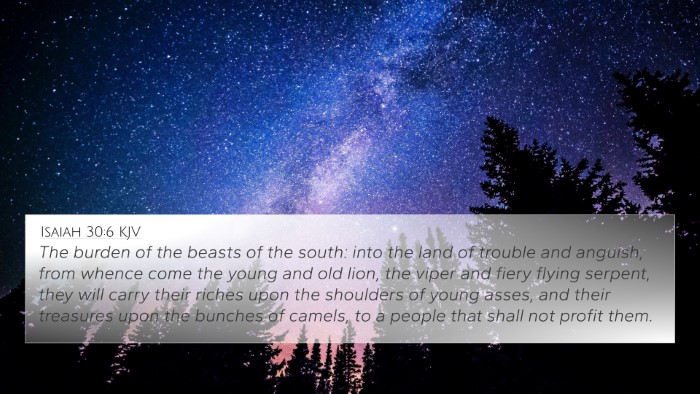Understanding Numbers 21:6
Numbers 21:6 states, “And the Lord sent fiery serpents among the people, and they bit the people; and much people of Israel died.” This verse is a significant moment in the history of the Israelites as they journey through the wilderness. It carries profound theological implications about sin, judgment, and redemption.
Context and Background
The context of this verse occurs during Israel’s journey to the Promised Land. Discontent among the people arises due to their hardships, leading them to speak against God and Moses. This grievance triggers God's response in the form of judgment—fiery serpents sent among them, resulting in deaths within the camp.
Thematic Analysis
This verse highlights several themes:
- Sin and Rebellion: The Israelites’ complaints reflect a lack of faith and gratitude, showcasing the human tendency to rebel against God in times of adversity.
- Divine Judgment: God’s anger leads to tangible consequences. The fiery serpents serve as both a physical and symbolic representation of the consequences of sin.
- Redemption and Salvation: Following this severe punishment, God provides a means of healing, establishing a path to redemption.
Cross-References and Connections
Understanding Numbers 21:6 can be enhanced by examining its connections with other biblical passages. Here are some key cross-references:
- Galatians 6:7: "Be not deceived; God is not mocked: for whatsoever a man soweth, that shall he also reap." - This verse emphasizes the principle of sowing and reaping, aligning with the consequences faced by the Israelites.
- Isaiah 30:1: "Woe to the rebellious children, saith the LORD, that take counsel, but not of me..." - This underscores the theme of rebellion and the consequent divine response.
- John 3:14-15: "And as Moses lifted up the serpent in the wilderness, even so must the Son of man be lifted up..." - Jesus refers to this event, connecting the symbolism of the serpent with His own crucifixion, providing a profound link between the Old and New Testament.
- 1 Corinthians 10:9: "Neither let us tempt Christ, as some of them also tempted, and were destroyed of serpents." - This reflects on the lessons learned from this incident, reminding believers of the importance of faith.
- Revelation 12:9: "And the great dragon was cast out, that old serpent, called the Devil, and Satan..." - The serpent serves as a representation of sin and evil throughout the scriptures.
- Psalms 78: 17-18: "And they sinned yet more against him by provoking the most High in the wilderness." - This elaborates on the attitudes of the Israelites during their journey.
- James 1:13: "Let no man say when he is tempted, I am tempted of God..." - This commentary on temptation can be reflected on in the context of this event.
Interpretation from Commentaries
Combining insights from renowned public domain commentaries:
Matthew Henry: Henry emphasizes God's holiness and justice in this event. The fiery serpents symbolize the immediate consequence of sin, an unavoidable reality faced by the Israelites. Yet, amidst this judgment, God's mercy is later revealed through a means of salvation.
Albert Barnes: Barnes highlights the severity of Israel's sin and the resulting judgment. He points out that the fiery serpents serve not only as punishment but also as a means to awaken the people to their spiritual state, prompting them to seek God for deliverance.
Adam Clarke: Clarke expands on the imagery of the serpents, noting their potential deadliness and the fear they instilled. He argues this moment serves as a prophetic foreshadowing, leading to the New Testament’s teaching on the need for looking to Christ for salvation.
Lessons for Modern Readers
This passage can serve as a profound lesson about the repercussions of sin and the nature of divine justice. It encourages believers to:
- Acknowledge Sin: Recognize the seriousness of sin and its impact.
- Seek Redemption: Embrace the means of salvation that God has provided.
- Practice Gratitude: Cultivate a spirit of gratitude and trust in God even in difficult circumstances.
Conclusion
In summary, Numbers 21:6 offers rich insights into the themes of sin, judgment, and redemption. By studying this verse in connection with others, such as those found in the New Testament, readers can appreciate the continuity of biblical themes and the ways of God's dealings with humanity throughout history.
Further Study
For those interested in deepening their understanding through Bible verse cross-references, tools such as a Bible concordance or a cross-reference Bible study guide can provide invaluable resources for enhancing one's study of Scripture. Exploring inter-Biblical dialogue not only aids in comprehending individual verses but also in grasping the overarching narrative of redemption woven throughout the Bible.









